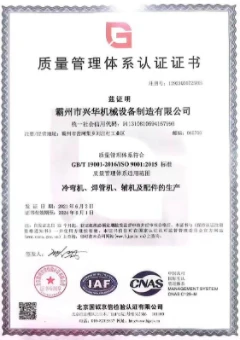purlin forming machine
Understanding Purlin Forming Machines Essential Tools for Modern Construction
Purlin forming machines are specialized pieces of equipment used in the construction industry to manufacture purlins, an essential structural element in steel framing systems. Purlins are horizontal beams, typically made of steel, which serve as a support for roof and wall cladding. They play a crucial role in ensuring the structural integrity of buildings, warehouses, and industrial structures. This article will delve into the mechanisms, benefits, and applications of purlin forming machines and their significance in modern construction methods.
Mechanism of Purlin Forming Machines
Purlin forming machines operate through a series of processes that convert raw steel coils into precisely shaped purlins. The primary steps involved in this process are uncoiling, leveling, feeding, roll forming, cutting, and stacking.
1. Uncoiling The process begins with the uncoiling of steel strips, usually coated or galvanized to protect against corrosion. 2. Leveling After uncoiling, the steel undergoes leveling to remove any internal stresses and ensure a flat, uniform surface. This step is crucial for achieving the exact dimensions required for the purlins.
3. Feeding The leveled steel enters the roll forming section of the machine. Accurate feeding mechanisms ensure that the steel strip is fed into the forming rollers without any distortions.
4. Roll Forming The core of the machine, the roll forming section, consists of a series of rollers that progressively shape the steel into the desired purlin profile. Different designs of purlins can be produced by adjusting the configuration of the rollers.
5. Cutting Once the purlin reaches the desired length, a cutting mechanism accurately cuts the formed purlin to size. This can be done either by an automated shear or a hydraulic cutter, depending on the machine's specifications.
6. Stacking Lastly, the finished purlins are stacked automatically or manually for packaging and distribution.
purlin forming machine

Benefits of Using Purlin Forming Machines
One of the significant advantages of purlin forming machines is their efficiency. They enable high-volume production with minimal labor input, thereby reducing overall manufacturing costs. The automated nature of these machines ensures precision in the dimensions of the purlins, which is critical for structural stability. Furthermore, the ability to produce different profiles on the same machine enhances flexibility, allowing manufacturers to meet varying customer demands without significant downtime.
Another notable benefit is the sustainability aspect. By using advanced technologies, these machines minimize waste by optimally utilizing the raw materials, thereby contributing to eco-friendly manufacturing practices. Additionally, the purlins produced are often lighter than traditional materials, leading to a reduction in transportation emissions and costs.
Applications of Purlin Forming Machines
Purlin forming machines find their applications across various sectors of construction. They are predominantly used in industrial buildings, warehouses, and agricultural structures, where large span frameworks are required. The lightweight and strong properties of steel purlins facilitate faster construction timelines and greater design flexibility.
Moreover, with the rise of modern engineering practices, purlins are also becoming increasingly popular in solar panel mounting systems, where sturdy yet lightweight structures are necessary to support solar arrays without compromising the integrity of the installation.
Conclusion
In summary, purlin forming machines are invaluable assets in the construction industry, providing efficient manufacturing of critical structural components. Their advanced operational mechanisms and the benefits they offer in terms of efficiency, cost-effectiveness, and sustainability make them indispensable in modern building practices. As construction technologies continue to evolve, purlin forming machines will likely play an even more significant role in shaping the future of the industry, enhancing the strength and resilience of structures worldwide. By understanding their operation and advantages, stakeholders can make informed decisions in project planning and execution, ultimately leading to safer and more sustainable construction outcomes.
-
High Frequency Straight Seam Welded Pipe Production Line|BzZhou Xinghua|Precision Welding&EfficiencyNewsJul.30,2025
-
High Frequency Straight Seam Welded Pipe Production Line - BzZhou Xinghua|Precision Engineering&EfficiencyNewsJul.30,2025
-
High-Frequency Straight Seam Welded Pipe Production Line-BzZhou Xinghua Machinery Equipment Manufacturing Co., LTD.NewsJul.30,2025
-
High-Frequency Straight Seam Welded Pipe Production Line-BzZhou Xinghua Machinery Equipment Manufacturing Co., LTD.|Precision Manufacturing, High EfficiencyNewsJul.30,2025
-
High Frequency Straight Seam Welded Pipe Production Line-BzZhou Xinghua Machinery Equipment Manufacturing Co., LTD.|Precision Steel Pipe Manufacturing&Industrial EfficiencyNewsJul.29,2025
-
High-Frequency Straight Seam Welded Pipe Production Line-BzZhou Xinghua Machinery Equipment Manufacturing Co., LTD.|Precision Steel Pipe Manufacturing&Industrial EfficiencyNewsJul.29,2025


